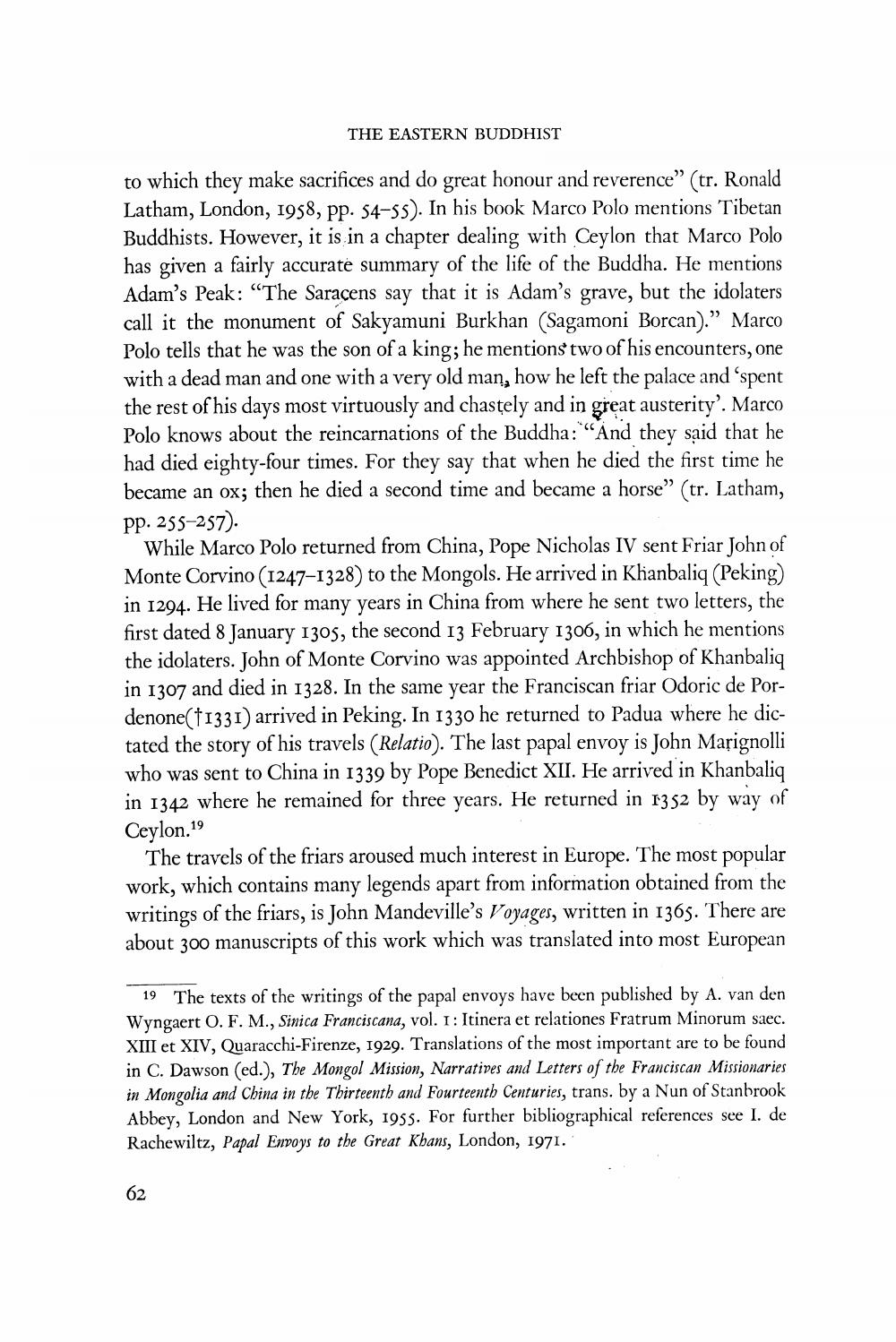________________
THE EASTERN BUDDHIST
to which they make sacrifices and do great honour and reverence” (tr. Ronald Latham, London, 1958, pp. 54-55). In his book Marco Polo mentions Tibetan Buddhists. However, it is in a chapter dealing with Ceylon that Marco Polo has given a fairly accurate summary of the life of the Buddha. He mentions Adam's Peak: “The Saracens say that it is Adam's grave, but the idolaters call it the monument of Sakyamuni Burkhan (Sagamoni Borcan).” Marco Polo tells that he was the son of a king; he mentions' two of his encounters, one with a dead man and one with a very old man, how he left the palace and spent the rest of his days most virtuously and chastely and in great austerity'. Marco Polo knows about the reincarnations of the Buddha:""And they said that he had died eighty-four times. For they say that when he died the first time he became an ox; then he died a second time and became a horse” (tr. Latham, Pp. 255-257).
While Marco Polo returned from China, Pope Nicholas IV sent Friar John of Monte Corvino (1247-1328) to the Mongols. He arrived in Khanbaliq (Peking) in 1294. He lived for many years in China from where he sent two letters, the first dated 8 January 1305, the second 13 February 1306, in which he mentions the idolaters. John of Monte Corvino was appointed Archbishop of Khanbaliq in 1307 and died in 1328. In the same year the Franciscan friar Odoric de Pordenone(†1331) arrived in Peking. In 1330 he returned to Padua where he dictated the story of his travels (Relatio). The last papal envoy is John Marignolli who was sent to China in 1339 by Pope Benedict XII. He arrived in Khanbaliq in 1342 where he remained for three years. He returned in 1352 by way of Ceylon.19
The travels of the friars aroused much interest in Europe. The most popular work, which contains many legends apart from information obtained from the writings of the friars, is John Mandeville's Voyages, written in 1365. There are about 300 manuscripts of this work which was translated into most European
19 The texts of the writings of the papal envoys have been published by A. van den Wyngaert O.F.M., Sinica Franciscana, vol. 1: Itinera et relationes Fratrum Minorum saec. XIII et XIV, Quaracchi-Firenze, 1929. Translations of the most important are to be found in C. Dawson (ed.), The Mongol Mission, Narratives and Letters of the Franciscan Missionaries in Mongolia and China in the Thirteenth and Fourteenth Centuries, trans. by a Nun of Stanbrook Abbey, London and New York, 1955. For further bibliographical references see I. de Rachewiltz, Papal Envoys to the Great Khans, London, 1971.'
62




